The world’s most remote towns where people still live
The most isolated places on Earth
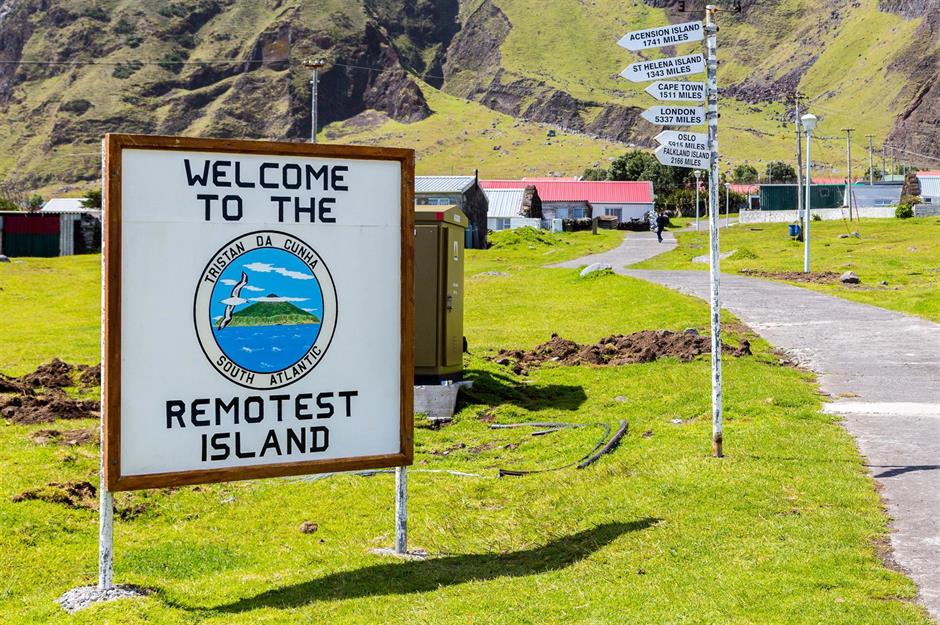
Have you ever thought about escaping the rat race and riding it out in one of the most remote places in the world? From the highest settlement on Earth to the coldest, some people spend their entire lives detached from the mainland.
Click or scroll on to take a look at the measures they take to survive in the most remote of locations.
Shaharah, Yemen
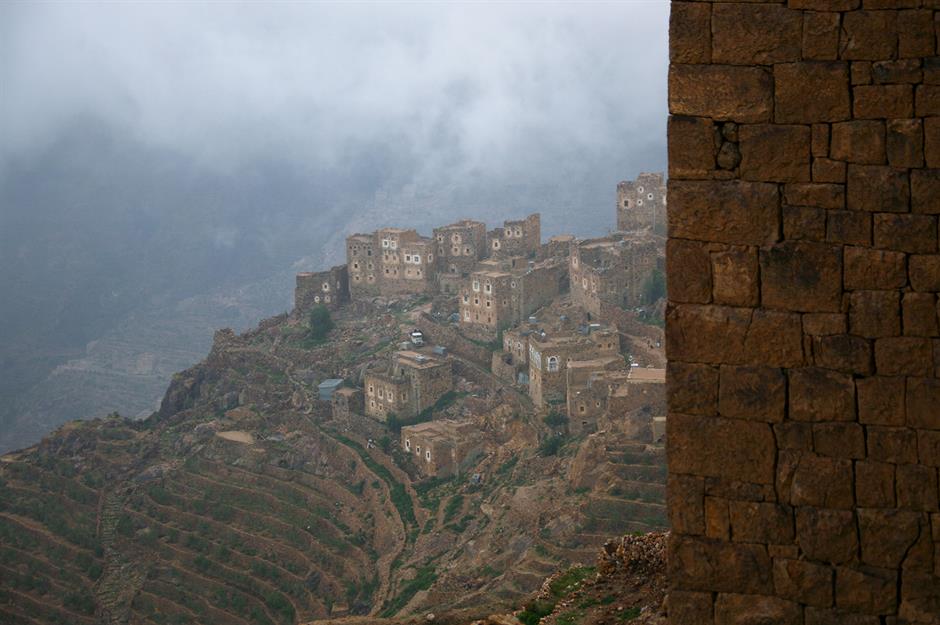
Teetering 8,530 feet (2,600m) above sea level, Shaharah is the only fortified village in Yemen. The village's location wasn’t common knowledge until the Yemeni Civil War in the 1960s, when the use of air force uncovered its secret hiding spot.
Shaharah, Yemen
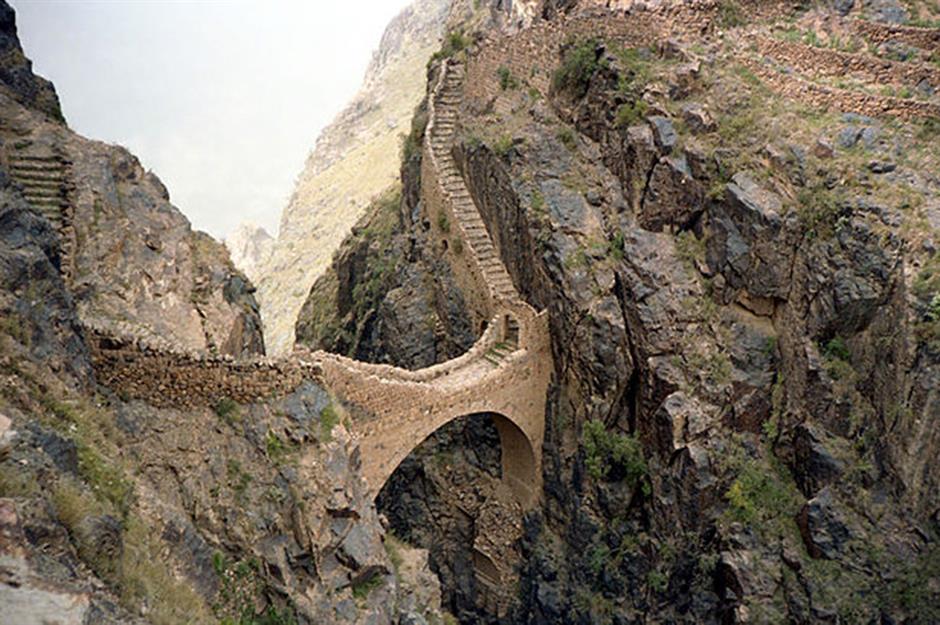
The remarkable dwelling place can only be accessed by means of an arching stone bridge spanning one of the enormous gorges surrounding the town, which almost looks as if it’s been extruded from the craggy mountain landscape.
During ancient conflicts, the village’s single point of entry, water cisterns and terraced fields made it an excellent stronghold for lengthy sieges.
Shaharah, Yemen
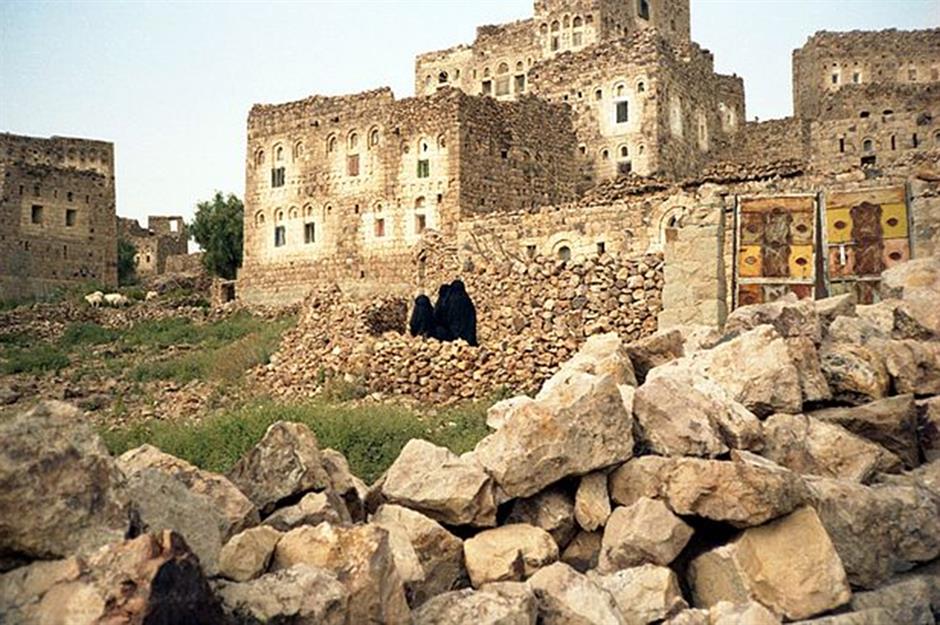
Not all visitors are turned away at the gates, however. The village has also been renowned as a centre for Islamic learning since the 9th century, welcoming scholars from throughout the region to come and study.
Shaharah, Yemen
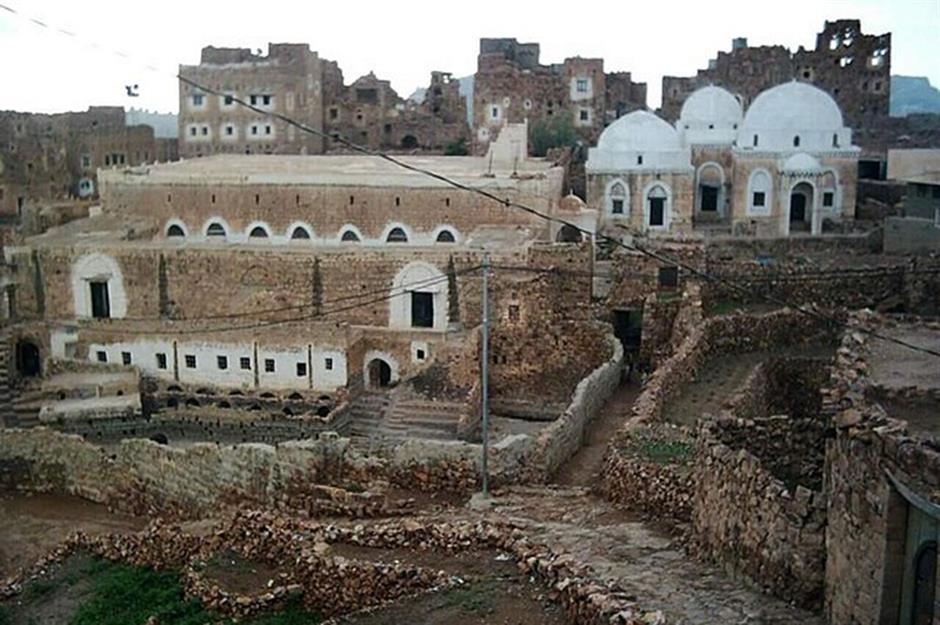
Sadly, Shaharah is nearly impossible to visit today, as non-Yemeni citizens require a police permit to travel to the village. It's located in Northern Yemen, where the Shia Insurgency has effectively turned the region into a war zone.
While the village itself is considered safe, the surrounding roads are dangerous, and police permits are extremely difficult to obtain.
St. Peter’s Island, Erlach, Switzerland
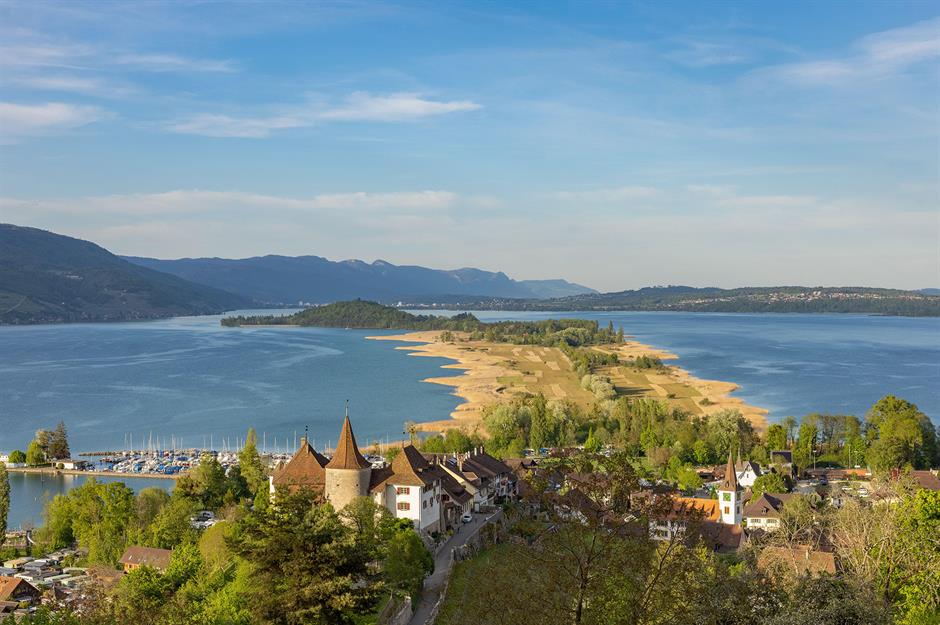
This idyllic island was the chosen place of refuge of famed philosopher Jean-Jacques Rousseau when he was expelled from his native France for his radical political ideas.
Interspersed with sweeping valleys, towering mountains and lush meadows, the island’s bucolic landscape would certainly have made a welcome refuge.
St. Peter’s Island, Erlach, Switzerland
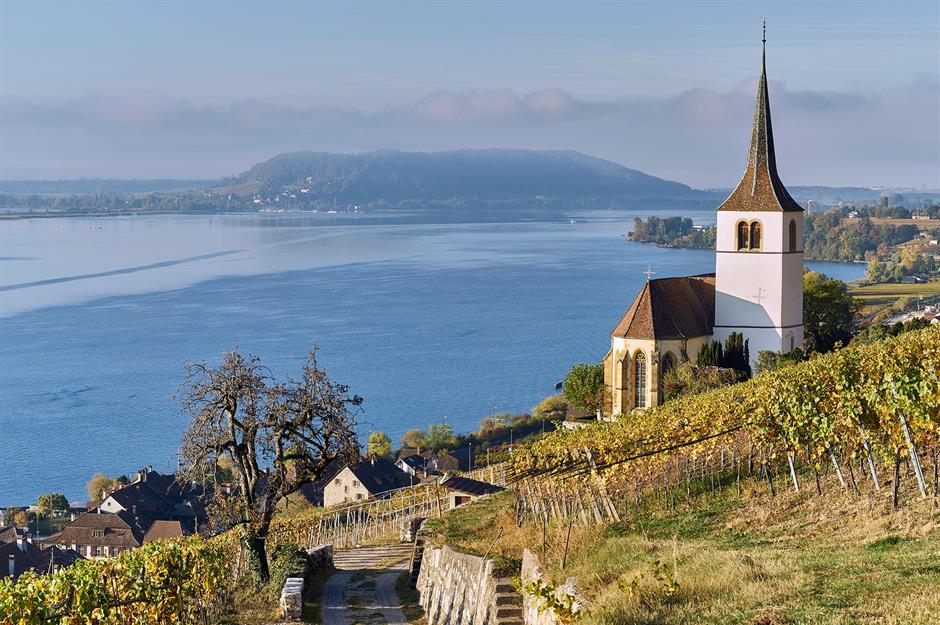
Forced to retreat from the hotbed of 18th-century Paris into this remote spit of land, Rousseau came to describe his weeks on St. Peter’s Island in his famous 1778 book, Reveries of a Solitude Walker as the happiest of his life.
St. Peter’s Island, Erlach, Switzerland

During his time on St. Peter’s, Rousseau was hosted by the local monastery, pictured here, which today has been converted into a seminary hotel.
However, after a mere six-week stint, Rousseau was expelled from the island because the local Bernese aristocrats were worried that his inflammatory ideas might stir up conflict.
St. Peter’s Island, Erlach, Switzerland
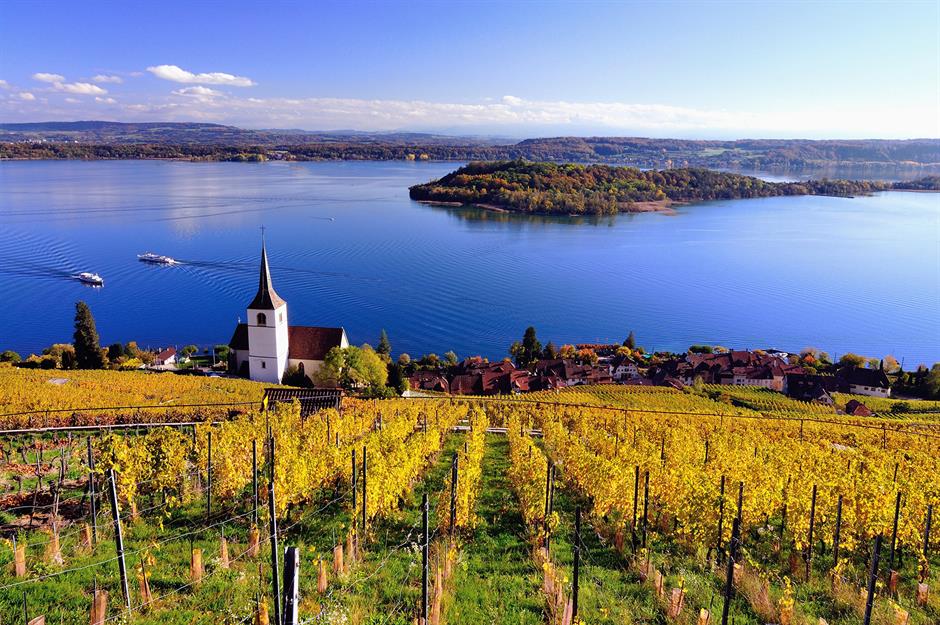
The remote island, technically a peninsula, is easily accessible from the mainland but gives visitors the impression of having stepped back in time.
The rest of the island is dotted with Swiss chalet-style villages, vineyards and wooded walkways, most of which also boast spectacular ocean views.
Whittier, Alaska, USA
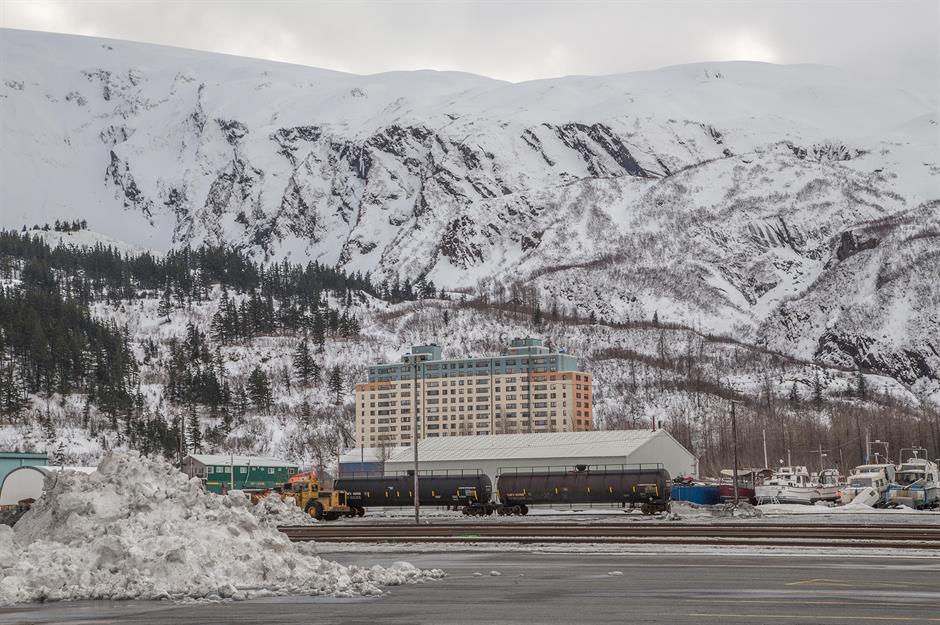
Welcome to Whittier, a tiny Alaskan town on the far side of the Prince William Sound (a sound is a body of water usually connected to an ocean or sea), nestled in the shadow of wintry mountains.
Unlike many small towns in remote locales which offer a conventional cluster of buildings, residential and commercial, Whittier presents a truly remarkable alternative. Nearly all of its roughly 200 residents live under one roof.
Whittier, Alaska, USA
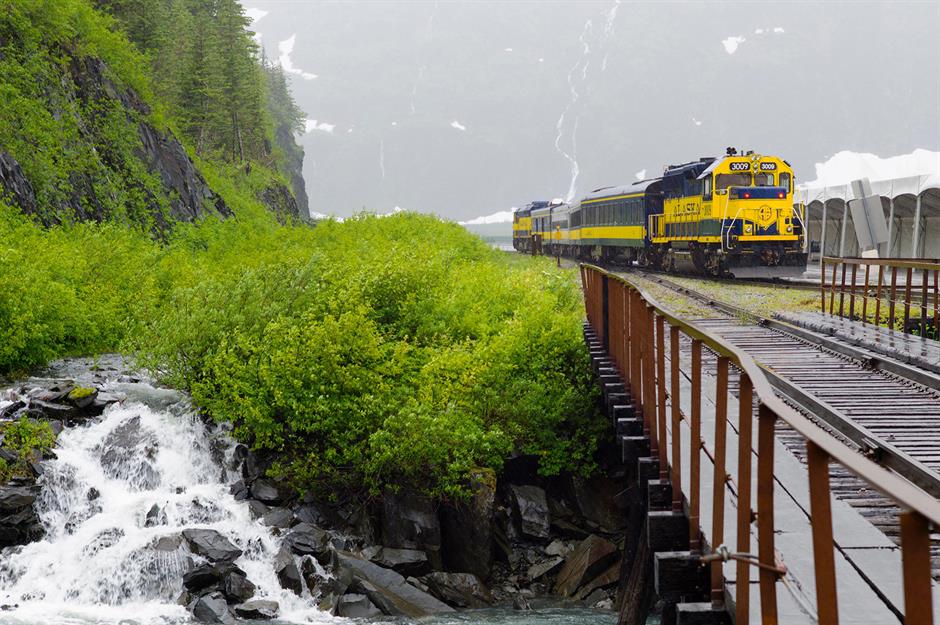
Whittier can only be accessed by a single-lane tunnel through the mountains, which cars can only pass through once an hour in either direction, forcing residents to organise their lives around the tunnel’s timetable.
Moreover, the town effectively has a curfew, since the tunnel closes at 22:30. If you miss the last entry, you’ll find yourself sleeping in your car, a common occurrence. According to CNN, many of the town’s residents own shirts which read POW, or ‘Prisoner of Whittier.’
Whittier, Alaska, USA
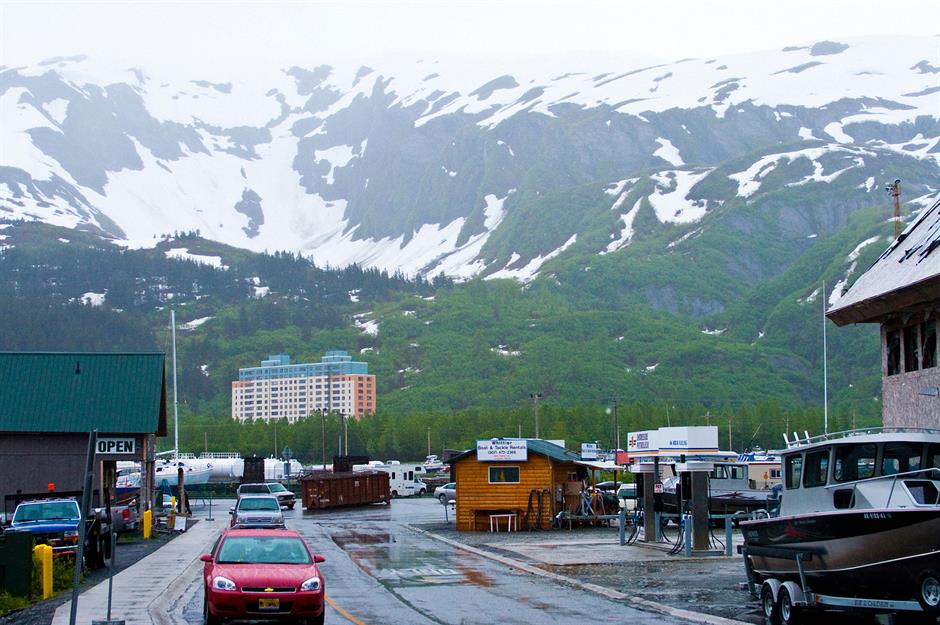
Whittier has everything residents need, not just contained in one town, but in one building. The 14-storey Begich Towers Incorporated, known locally simply as the BTI, may seem like a bit of a blot on the winter wonderland-eque landscape, but to almost all of the 200-odd Whittierites, it’s home.
It's also the local hospital, school, police station, grocery store, church, post office and city council headquarters!
Inside the BTI, a former Cold War-era army barracks which now resembles an ageing brutalist hotel, residents seem to enjoy the sense of community facilitated by living under the same roof. “We’re all family here,” they claim.
Whittier, Alaska, USA
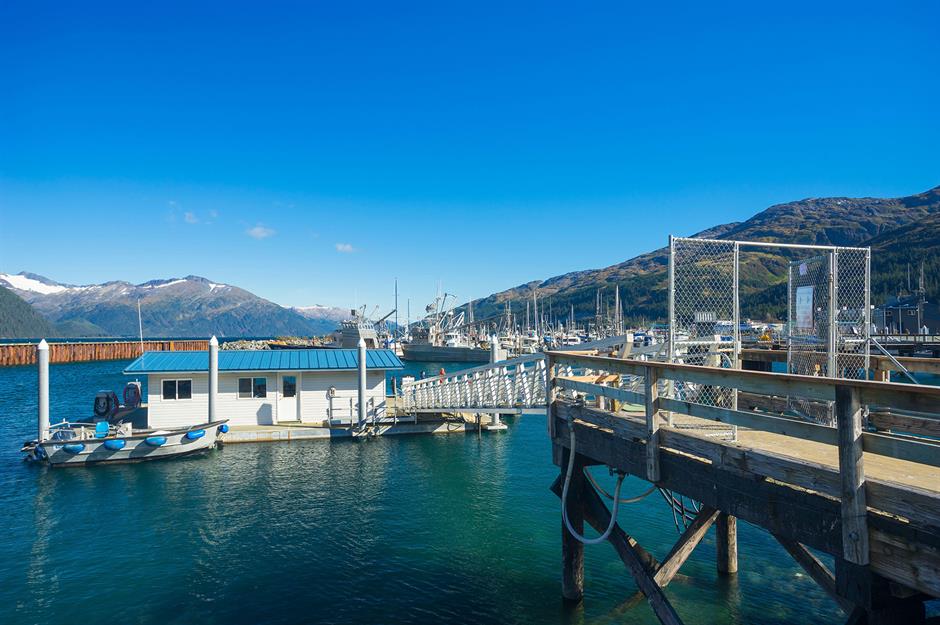
What's more, given the inhospitable conditions outside most of the year, it’s just as well that residents feel this way.
In the true dead of winter, leaving Whittier becomes nigh on impossible, only feasible by train, weather permitting. While the surrounding scenery may be worthy of a National Geographic shoot, it’s generally best enjoyed from inside the BTI.
Coober Pedy, Australian Outback, Australia
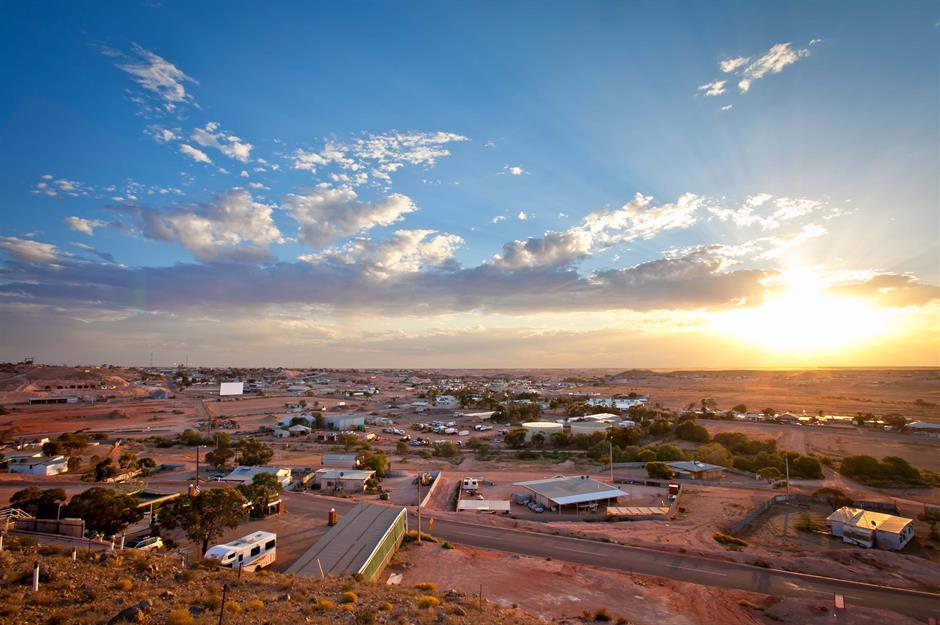
526 miles (846km) north of Adelaide, in the Australian Outback, one of the most hostile places on Earth is Coober Pedy. With over 4,000 hours of sunshine a year and barely any rain, this otherworldly landscape is known for opal mining.
At the height of Australian summer, the temperature in Coober Pedy swings between 25.3°C (77.5°F) and 36.7°C (98.1°F). With record highs of 53˚C (127˚F), it's not surprising that half of the town's 2,500 inhabitants choose to live underground.
Coober Pedy, Australian Outback, Australia
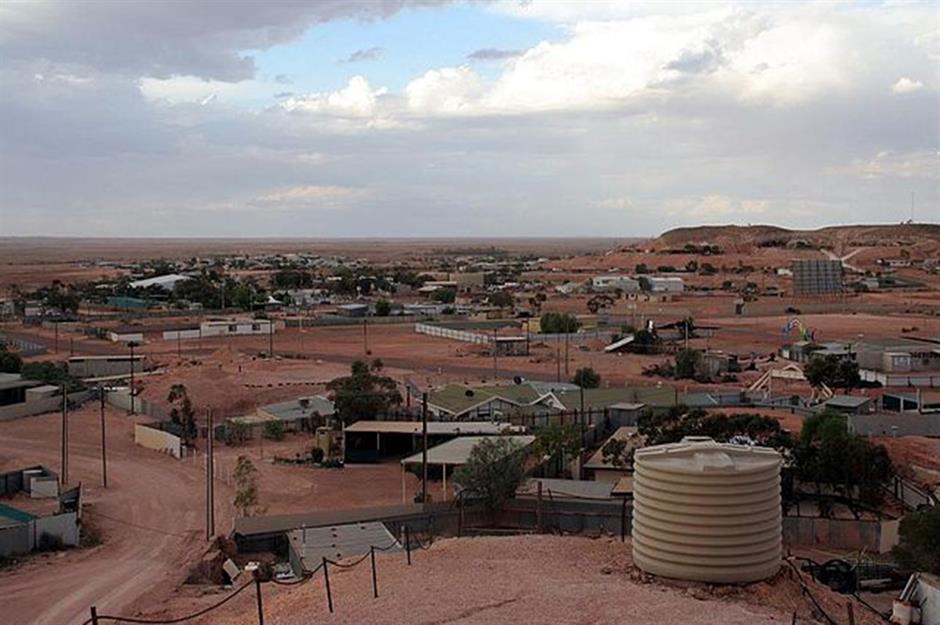
Many of the old tunnels that once served the 70 opal fields operating in the area have been converted into living quarters. Dug into the sandstone bedrock they include ventilation shafts for fresh air and get their energy from solar panels and wind farms on the town's outskirts.
The town featured on the British Channel 4 documentary series World’s Most Extreme and in 2023, Warren Andrews, director of Andrews Property, put some of the underground homes up for auction. Many were still in good condition, while others needed "a lot of work" Andrews told British newspaper The Sun.
Coober Pedy, Australian Outback, Australia
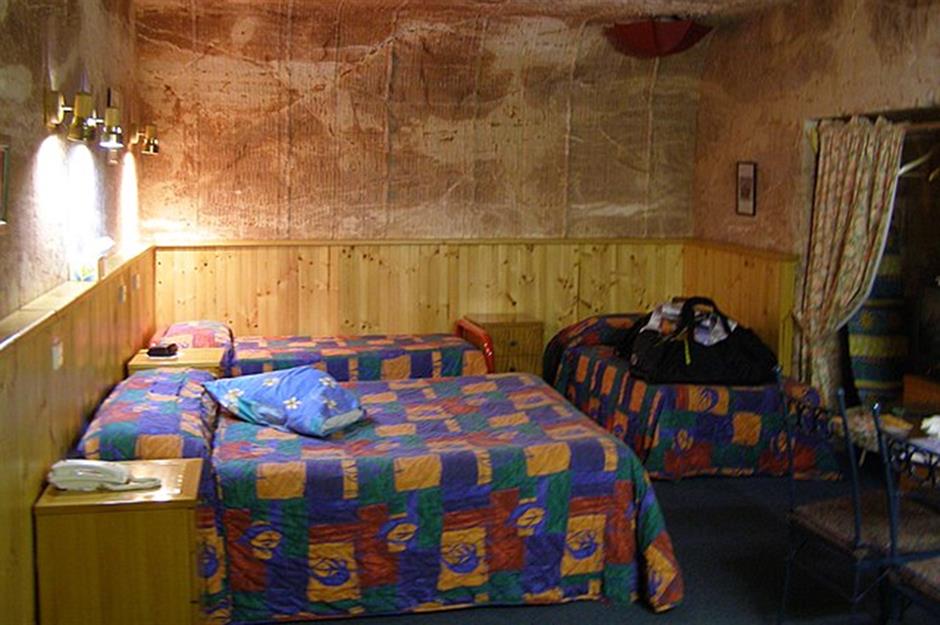
The homes became available due to owners failing to pay years of rent. Bidding opened at just £2,634 ($3.5k / AU$5.2k) on the cheapest lot and by the time the auction was over, all the properties had sold, with buyers snapping up bargains for as little as £8,418 ($11.1k / AU$16.4k).
This Jelly Crescent home, bought by one lucky bidder, is typical of the area, with corrugated metal structures above ground and the main house below.
Although the listing didn't contain any recent interior photos, this image of an underground motel room gives an idea of what to expect from cave living. The tiled floors, uneven, distinctive walls and low ceilings are typical of homes in Coober Pedy.
Coober Pedy, Australian Outback, Australia
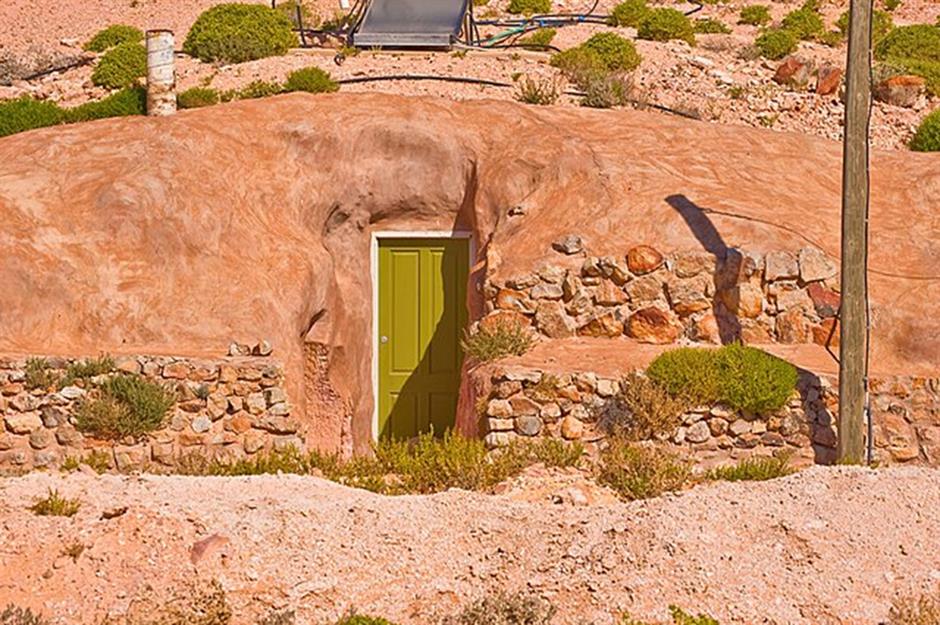
Despite some of the properties selling for less than the council had hoped, a spokesperson told 7 News that the total recouped from the auction was AU$504,000, which is around £258k ($341k) and "all the outstanding rates were recovered."
Fancy moving there? As of 2024 Coober Pedy is desperately seeking a new CEO to "steer its council towards financial stability," and has even bumped up the salary in the hopes of attracting the right leadership, as reported by 7 News.
Supai, Arizona, USA
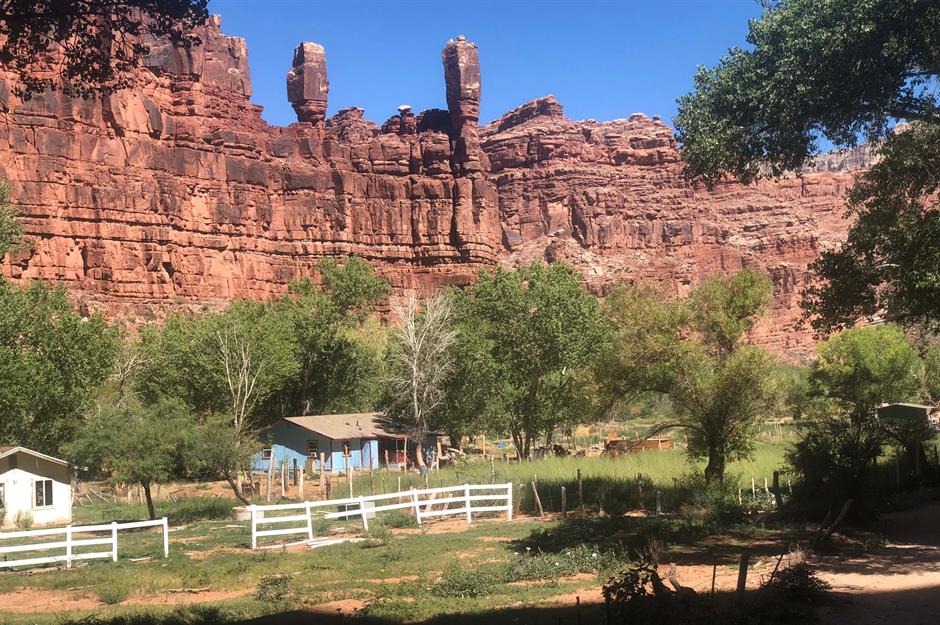
Often referred to as the most remote community in the lower 48 states, the secluded community of Supai is located within the Grand Canyon in an area known as Havasu Canyon.
Only accessible by helicopter, mule or on foot, it sits eight miles from the nearest road. Living here is not for the faint of heart, but it is an incredibly beautiful place.
Supai, Arizona, USA
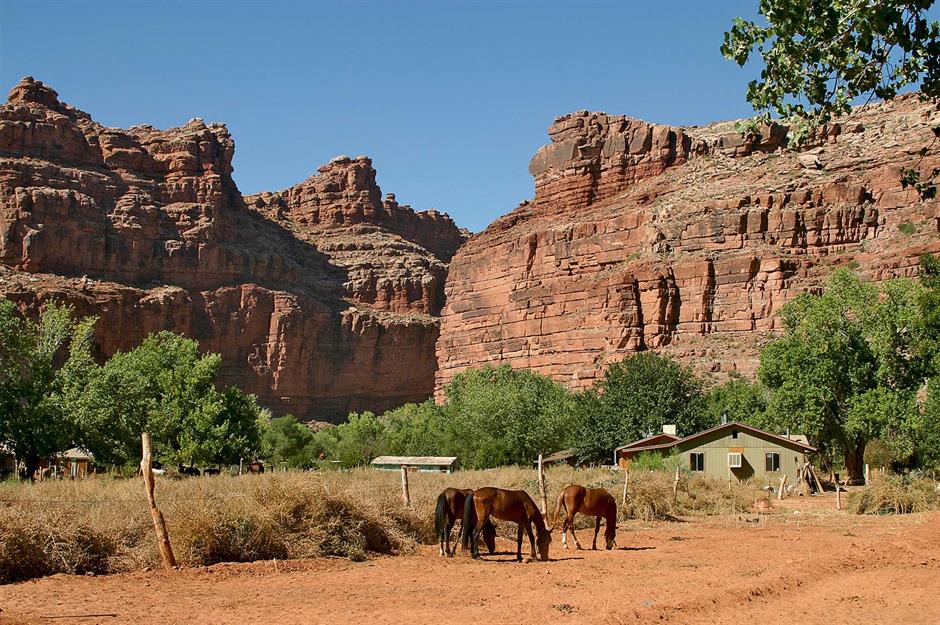
It is inhabited by the Havasupai Native American tribe who have lived in the village for the last 800 years. They survive in the arid, solitary landscape by irrigation farming in the summer and hunting animals.
The nearby turquoise waterfalls and springs provide them with a constant water source.
Supai, Arizona, USA
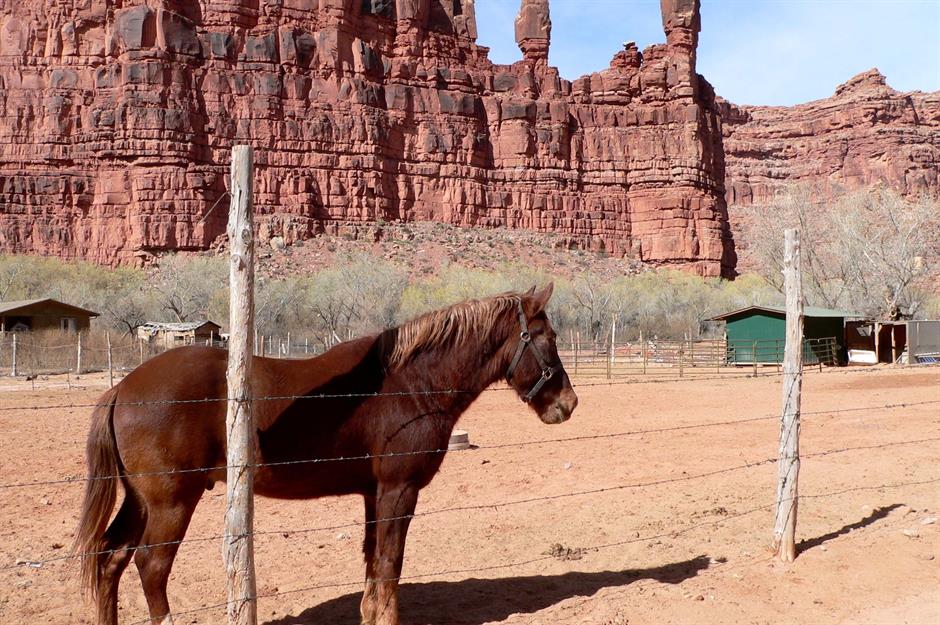
To this day, the village is the only place in the US that receives their mail and parcels by mule. A series of linked donkeys carry the packages along the eight-mile trail to the village regularly for the small population.
In October 2022, the remote village was devastated by flooding which "destroyed several bridges and trails that are needed not only for our tourists, but for the everyday movement of goods and services into the Supai Village," the tribe said, as reported in British newspaper The Guardian.
However, there have also been positive reports of flourishing flora and fauna and new waterfall flows in the area.
Supai, Arizona, USA
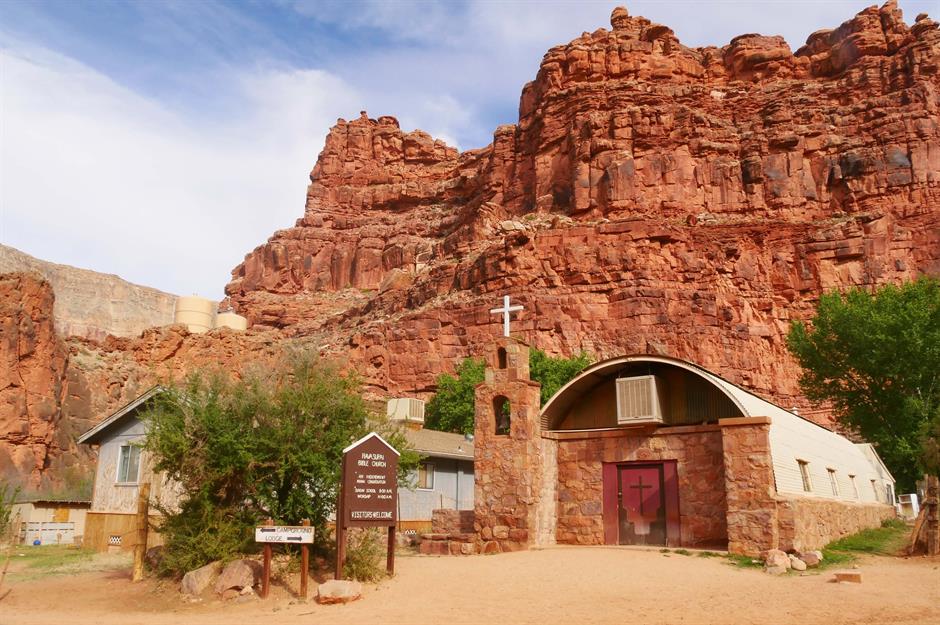
Spread over 188,000 acres (76.1ha) of land attracts more than 20,000 visitors a year. With a school, store and a small church, the village offers some amenities for the locals.
However, if you're planning a visit, it's important to know that Supai is not part of Grand Canyon National Park. And to be granted access, you'll need to be lucky enough to secure a permit to Havasu Falls via a lottery held once annually, typically in February.
Tristan da Cunha, Saint Helena
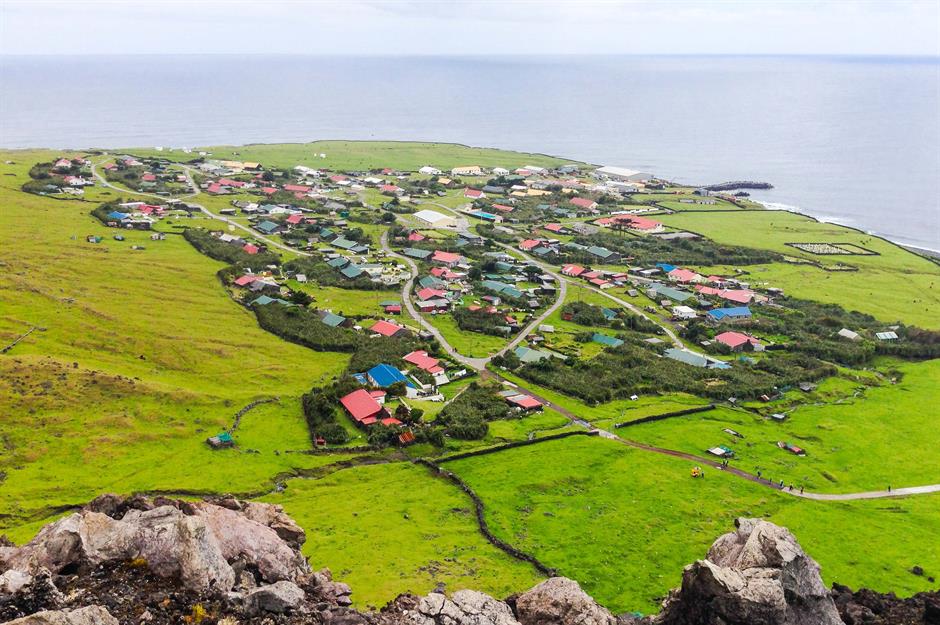
The world's most remote populated island, Tristan da Cunha sits in the middle of the Atlantic Ocean.
1,750 miles (2816km) from Cape Town, Edinburgh of the Seven Seas, the only settlement on the island, is home to around 239 permanent residents.
Tristan da Cunha, Saint Helena
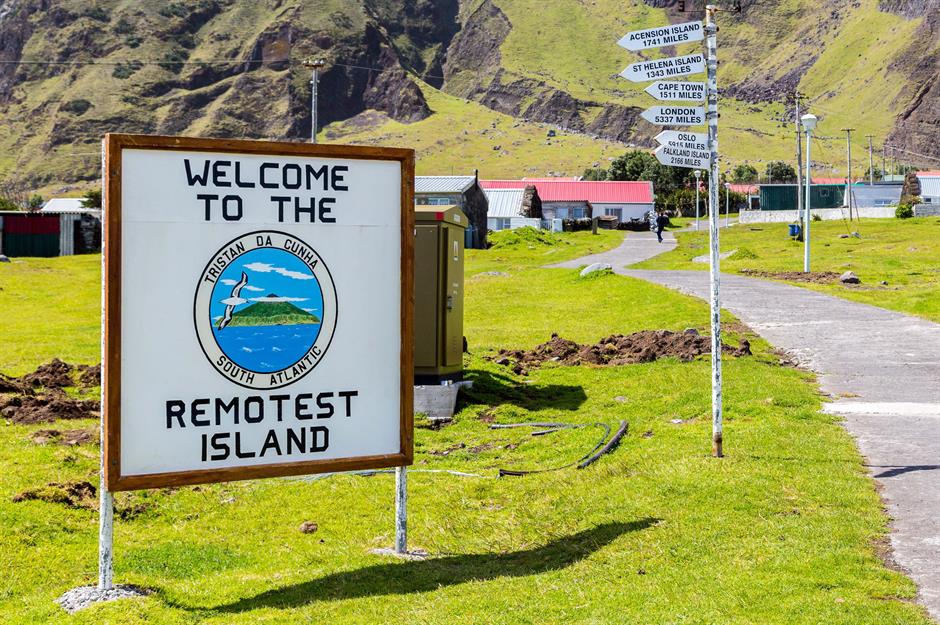
Even though the island has a harbour, any large yachts or vessels have to anchor a distance from the coast due to its small size. The waters around the islands are also protected as a Marine Protection Zone, prohibiting certain activity.
Local ferries operate as frequently as they can, to and from the island, but with the weather only good enough 70 days a year, reaching the extreme location where people live is difficult.
Tristan da Cunha, Saint Helena
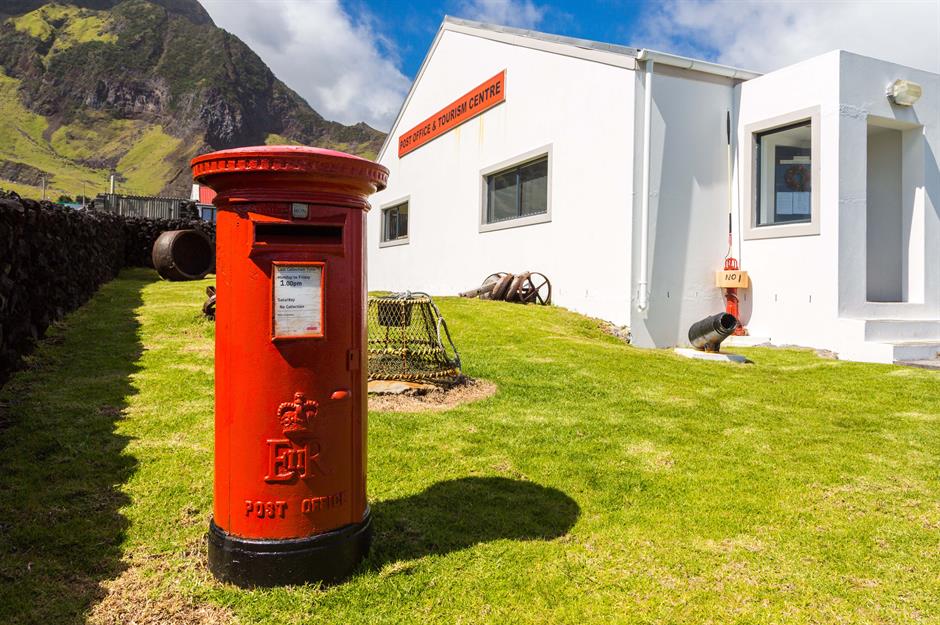
All the residents have access to modern-day amenities including The Camogli Health Centre which offers dental treatment and peforms minor operations. Serious medical cases (including expectant mothers) must travel by ship to Cape Town.
There are two curches on the island, one Anglican, one Roman Catholic, plus a grocery shop and a post office, where the island produces its own, rather pretty, stamps.
There's a police station with one full time officer, a combined tourism centre and post office, a swimming pool, an internet café, one supermarket and the world’s most remote pub called the Albatross.
Tristan da Cunha, Saint Helena
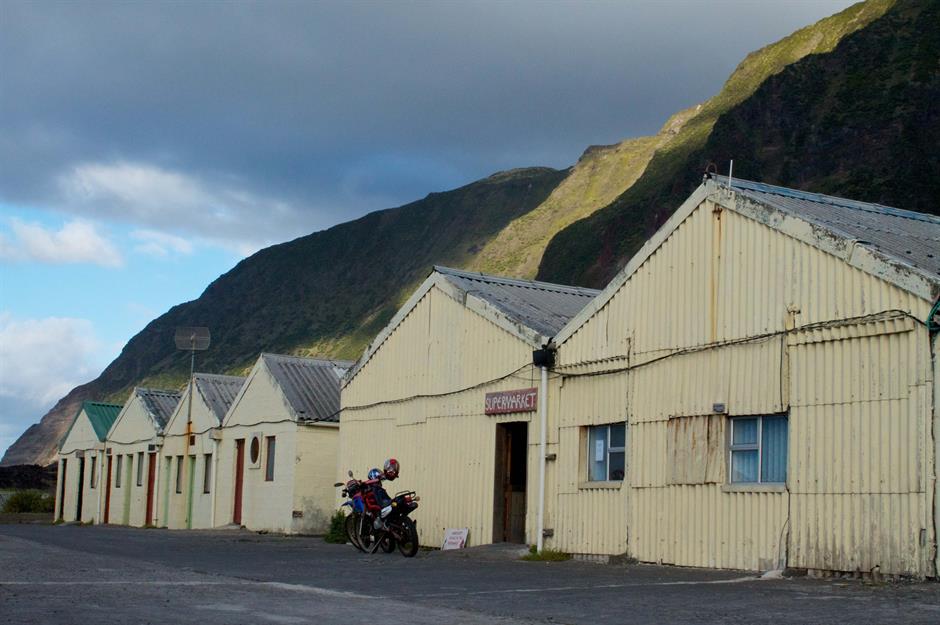
Open Monday to Friday, the local supermarket provides essential produce for the villagers. However, goods need to be ordered months in advance of the arrival of the incoming ships so many islanders grow their own crops and rear livestock so as not to rely on the supermarket.
On the island's official website it says: "It took an extra-ordinary breed of people, ready to live at the margins of life, to settle and eventually thrive in the world's most isolated community." and we could not agree more!
Utqiagvik, Alaska, USA
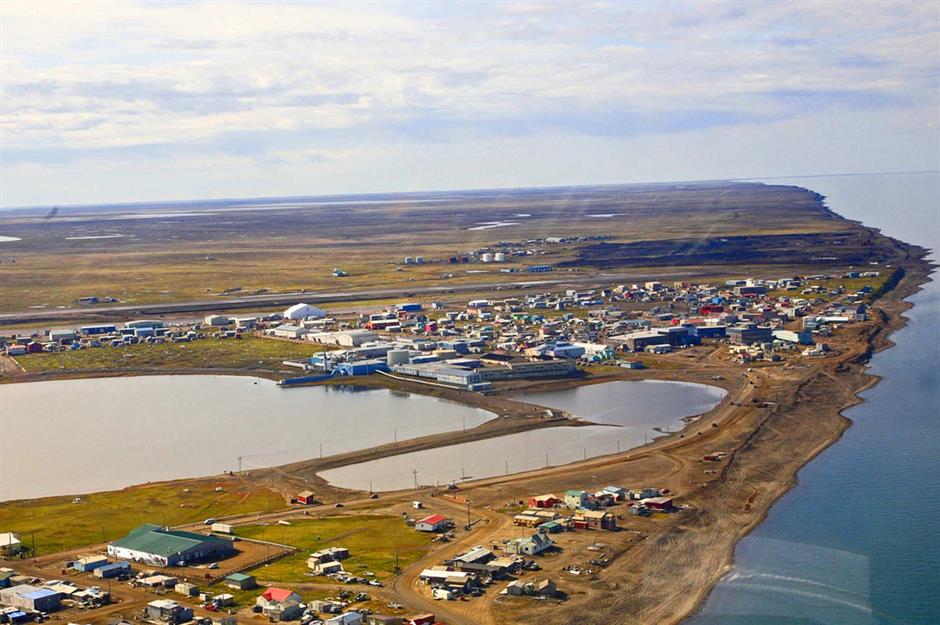
The northernmost community in the United States, Utqiagvik feels completely cut off from the world. With no roads connecting it to other settlements, the dirt tracks that do exist lead just a few miles outside the main town.
Utqiagvik, Alaska, USA
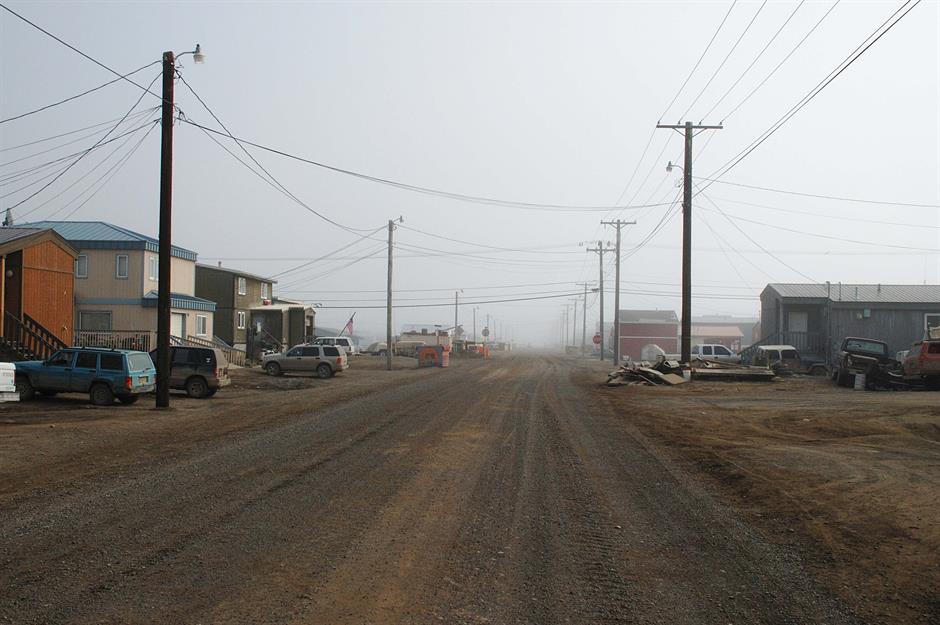
The city is built upon a layer of permafrost that's up to 1,300 feet (396m) deep in some places, making life hard for the permanent population of just under 4,500 residents.
The warm season has an average high of just 2°C (35.6°F) and the winter lasts for 160 days a year, with more than two months spent in complete darkness.
Utqiagvik, Alaska, USA
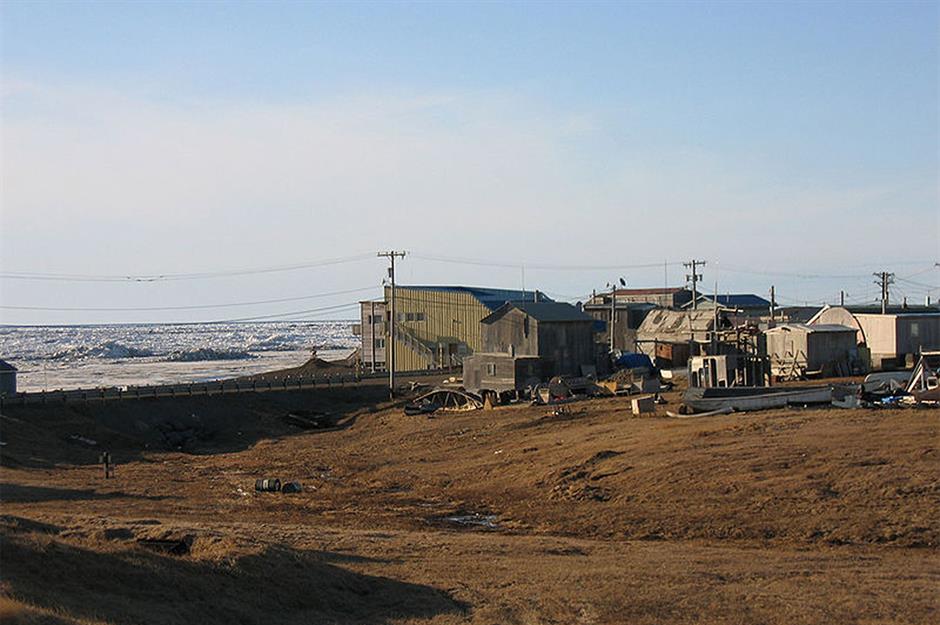
Even though Utqiagvik is a modern community, the locals still practice hunting, fishing and whaling to support the economy as well as for their own food.
Only accessible by plane, the town has an airport which is the lifeline for any imports of vital supplies.
Utqiagvik, Alaska, USA
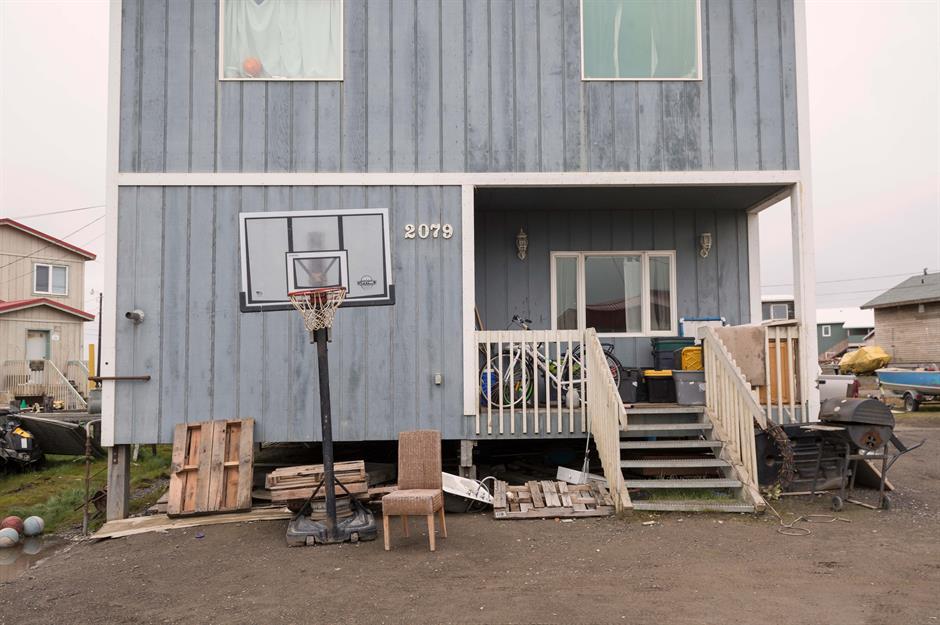
Utqiagvik is not completely cut off and its residents have a great quality of life. The homes are heated by natural gas from local oil fields and they have up-to-date water and sewage systems.
The town has churches, various schools and a college. There's phone, internet, mail, radio and cable communications to keep in touch with the rest of the world too.
La Rinconada, Peru
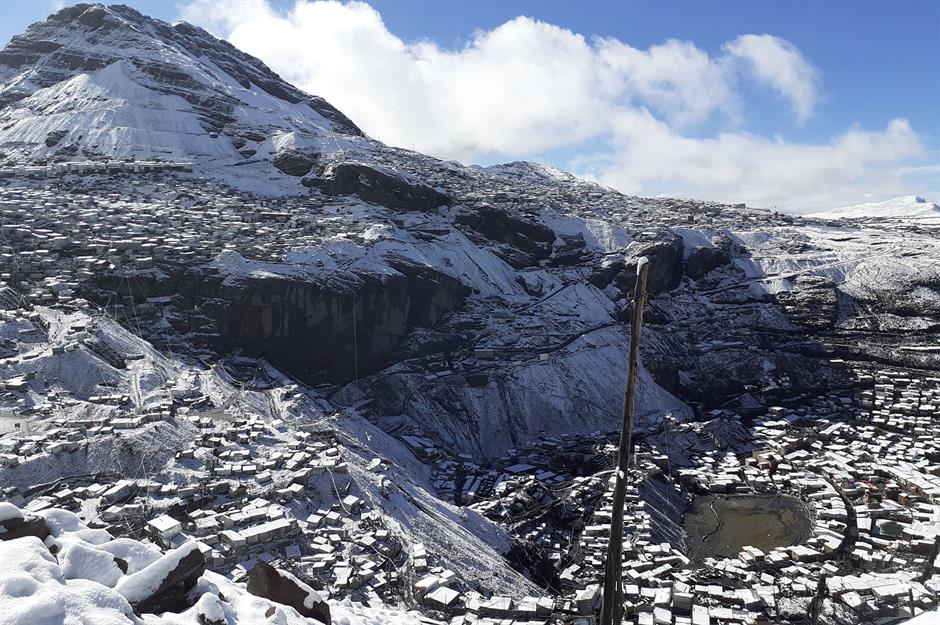
At a height of over 17,000 feet (5,181m), La Rinconada in Peru is the highest human habitation in the world.
Perched atop Mount Ananea in the Peruvian Andes, the high-altitude homes are only accessible by a mountainside road and can take several days to reach.
La Rinconada, Peru
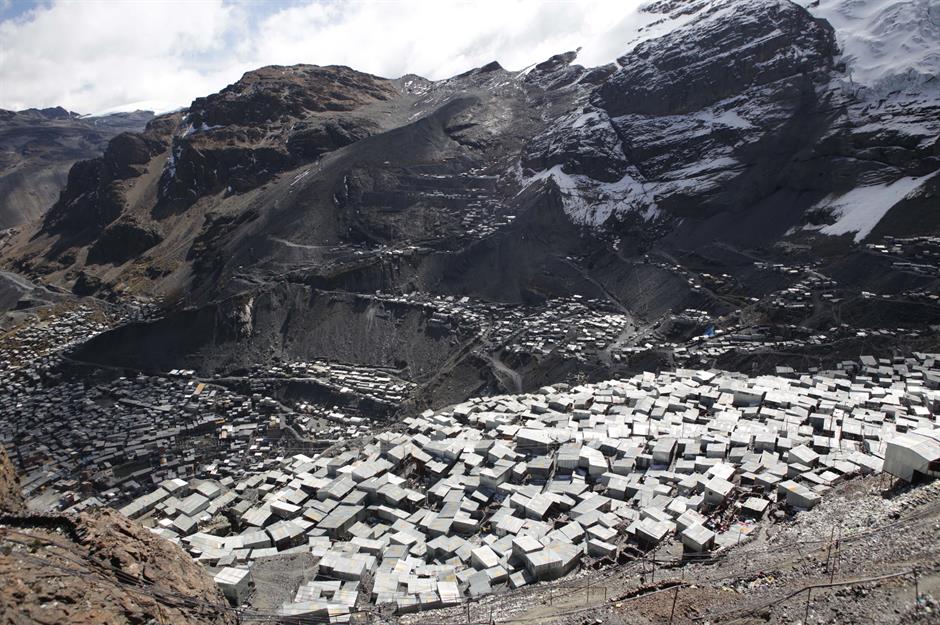
Around 29,678 people call the town home, but with no basic modern amenities and little infrastructure (there's no sanitation system or plumbing), it's not an easy life.
Reportedly, residents suffer from discolouration of the lips and fingertips due to the body producing more red blood cells to compensate for a lack of oxygen in the high-altitude air.
La Rinconada, Peru
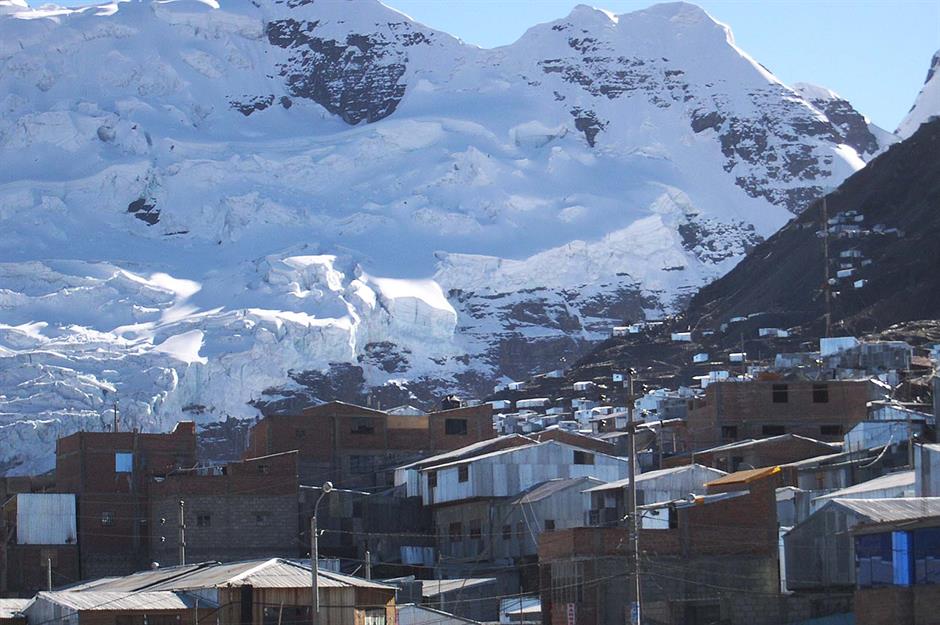
The city itself is iced over for most days of the year and at such a height, the air is so thin that the residents have had to adapt to this more difficult way of life.
They've found ways of entertaining themselves, which include meeting in cafés and setting up a local football team.
La Rinconada, Peru
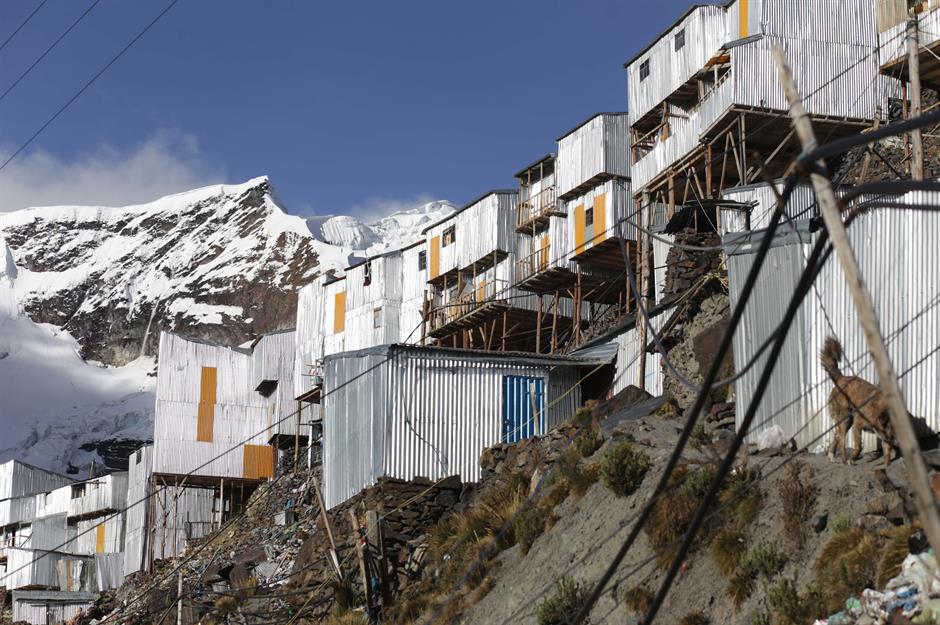
Even though the town is extremely poor, the economy relies on the unregulated gold mines that are carved into the mountainside.
Miners work for their contractors for around a month, then for themselves for around a week, when they are allowed to keep any gold they extract according to British newspaper The Telegraph. However, there is no guarantee they will ever strike lucky!
Migingo Island, Lake Victoria, Africa
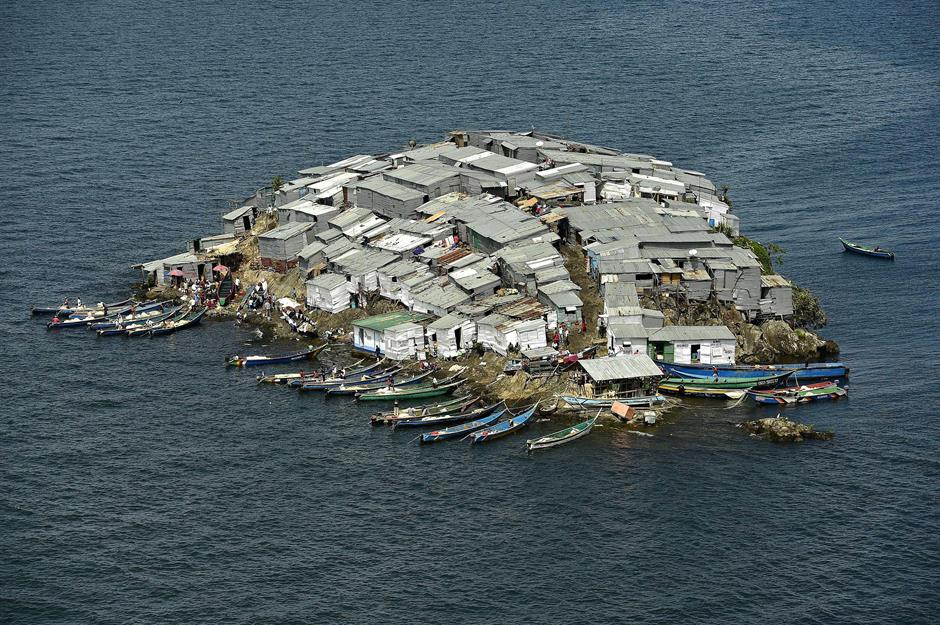
Lake Victoria is the largest lake in Africa and is home to one of the most isolated communities on Earth, Migingo Island.
With a reported population of around 500 people, made up mostly of fishermen crammed into less than 22,000 square feet (2,043sqm) , the island is far from paradise.
Since the turn of the century, it has also been at the centre of a territorial dispute between Kenya and Uganda.
Migingo Island, Lake Victoria, Africa
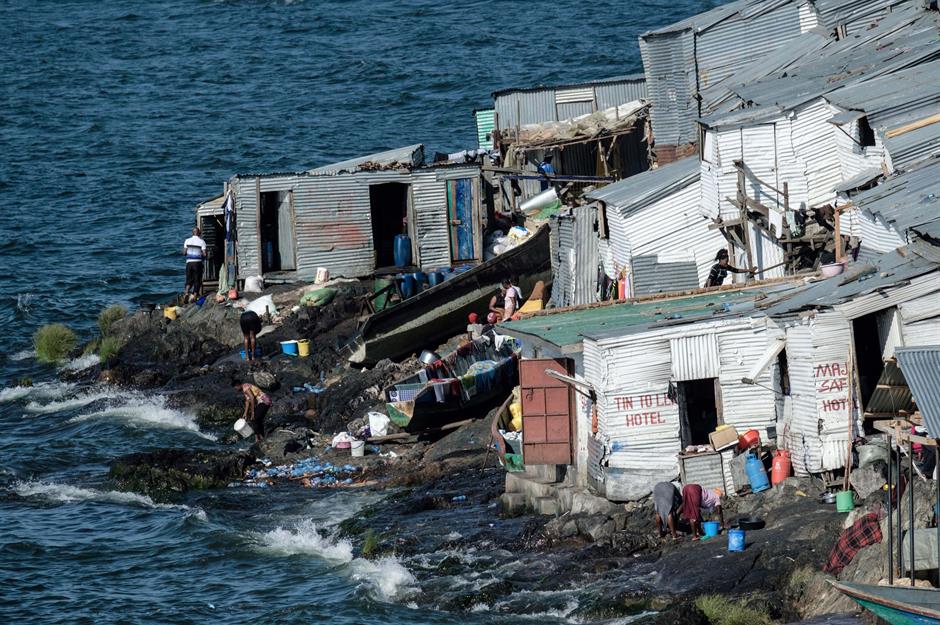
Inaccessible to those without boats, the crowded island, which is about the size of half a football pitch, is jam-packed with houses made from recovered tin and scavenged materials.
The deep waters that surround it are rich with fish.
Migingo Island, Lake Victoria, Africa
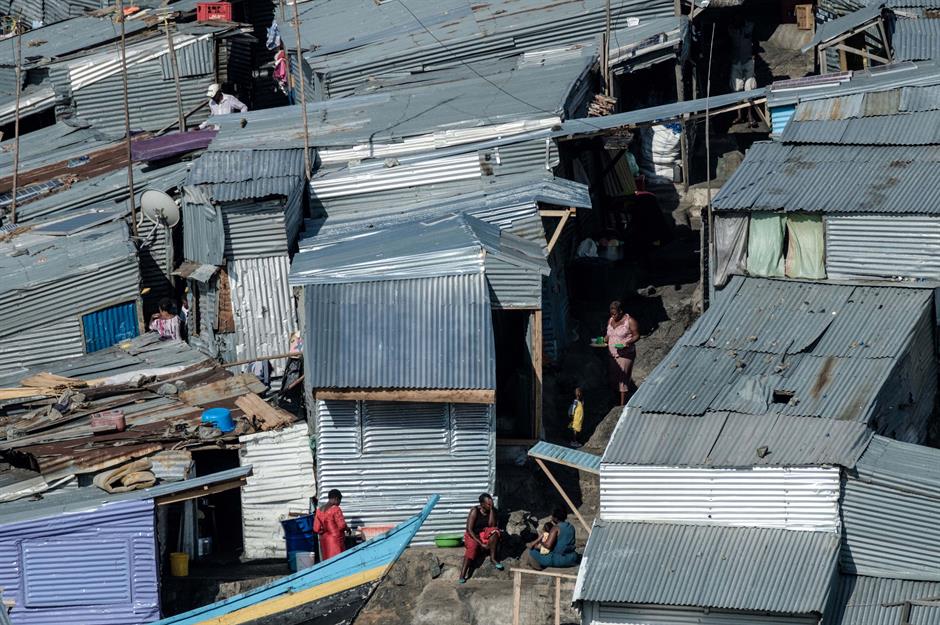
However, islanders have made the best of life on the rocky outcrop and have built bars, hair salons and even a tiny port to make getting in and out of the island easier. A few of the residents have mobile phones so they can contact the outside world, but the signal is patchy at best.
Migingo Island, Lake Victoria, Africa
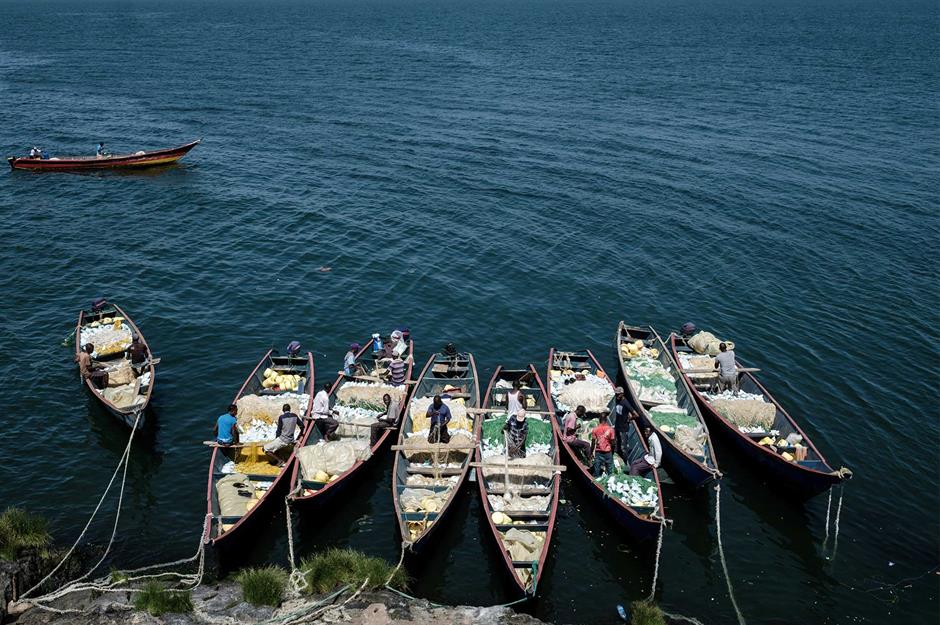
The residents made their way to the island because the surrounding deep water is home to large numbers of Nile perch, which provide income for the fishermen. Living directly on the island saves them fuel and also gives them easy access to wholesale buyers.
Despite the political uncertainty of which country the island belongs to, the people simply wish to carry on with their lived. Speaking to British newspaper The Guardian in 2018, a Kenyan fisherman called Emmanuel Aringo said: "I don’t know who this island belongs to. These are all political issues and we just want to sell our fish."
Villa Las Estrellas, Antarctica
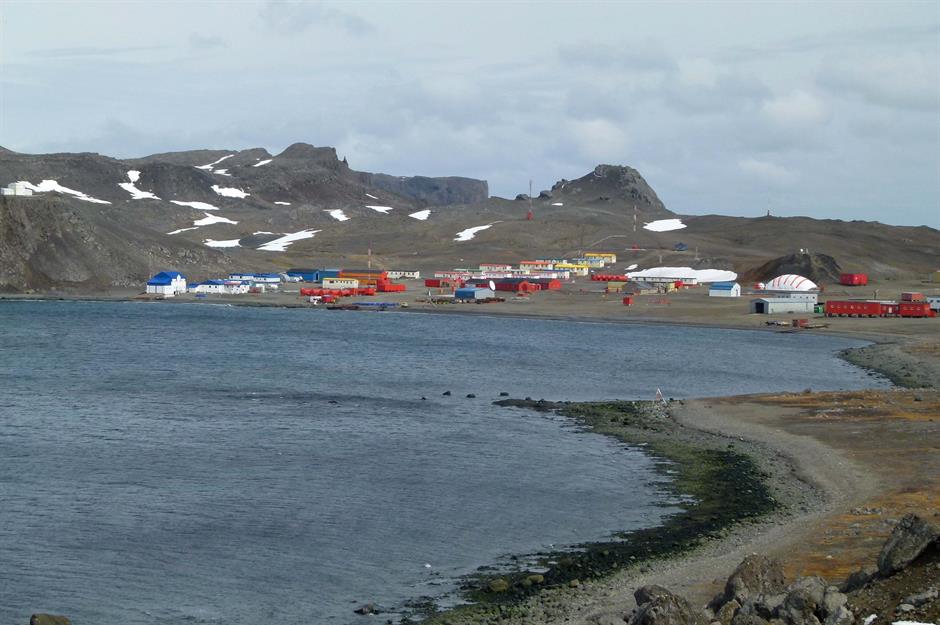
Many think of Antarctica as a barren, empty land, however, there's a small Chilean community that calls the icy expanse home. Villa Las Estrellas is as isolated as towns come with just 14 homes, one bank, a post office, a small school, a church, a gym and a souvenir shop.
Villa Las Estrellas, Antarctica
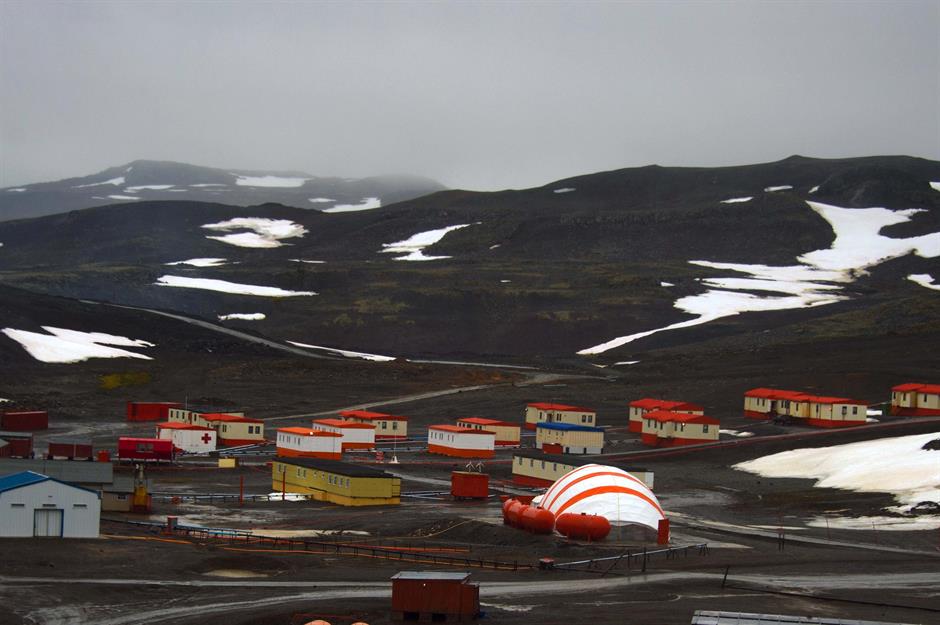
Located on the Presidente Eduardo Frei Montalva Base with a population of around 100, which gets smaller in the harsh winter months, the residents tend to be a rotation of scientists or personnel from Chile's navy and air force.
Those on long-term stints often bring their families.
Villa Las Estrellas, Antarctica
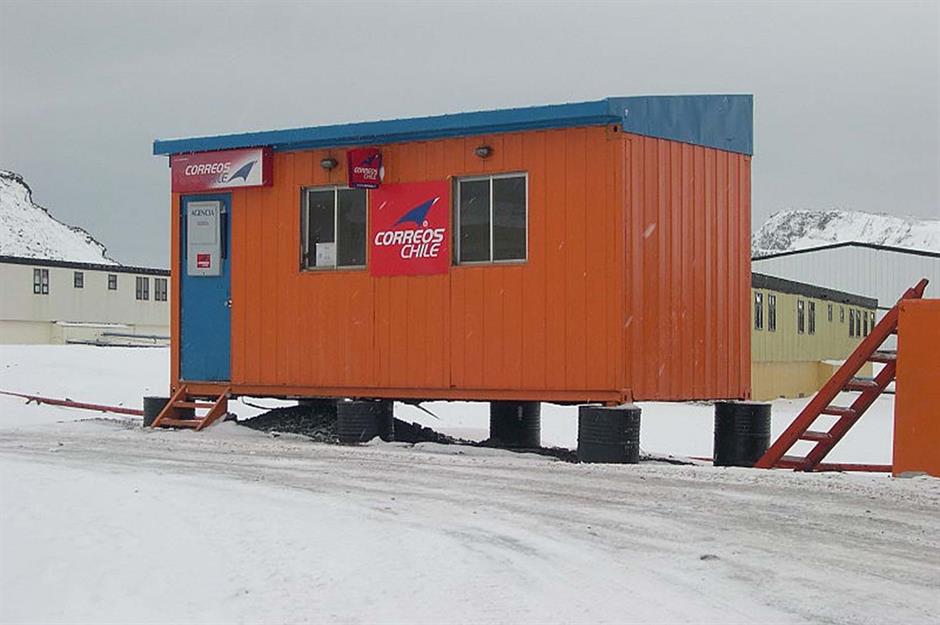
The hospital on the island is equipped for basic lifesaving procedures and a small pharmacy is also available.
However, with limited facilities and only one doctor and one nurse, all emergency cases have to be flown to health centres in South America, a mere 625 miles (1,005km) away.
Villa Las Estrellas, Antarctica
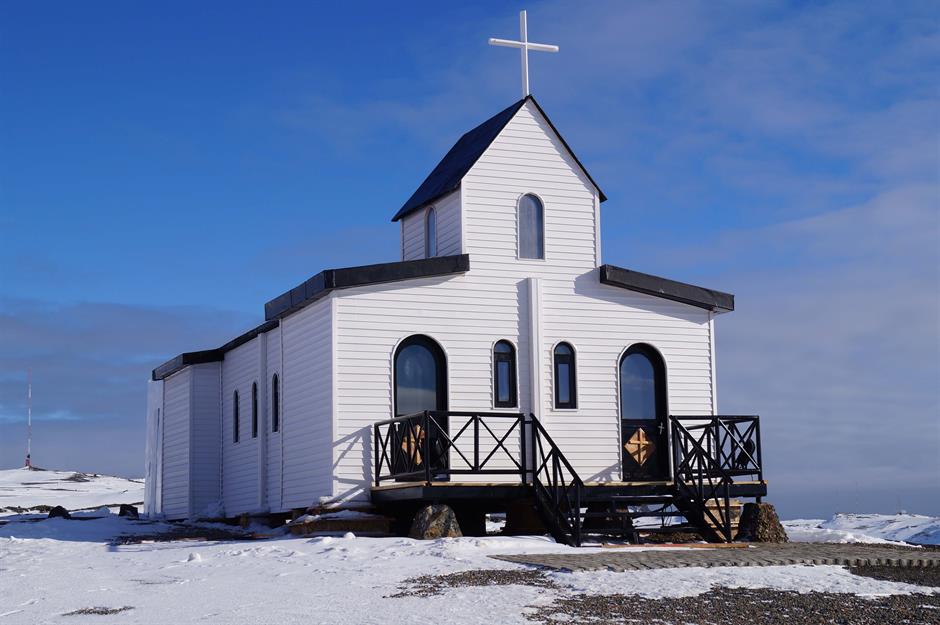
Not only is the town remote, but it also comes with an ultimatum: If you want to live on the island, you must have your appendix removed due to the lack of specialist surgeons who can deal with the procedure.
A pretty extreme precaution to have to take! What's more, it's advised not to fall pregnant in the area as it can take days to reach a hospital.
Oymyakon, Russia
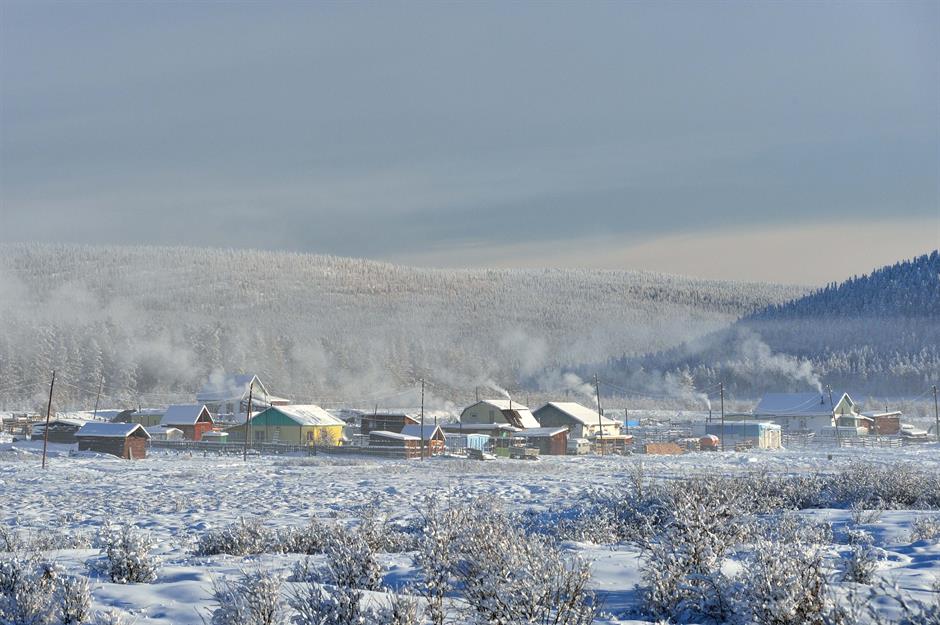
An almost inhospitable location, the town of Oymyakon in Russia is closer to the Arctic Circle than it is to the nearest city.
Frostbite blights the lives of the locals in the isolated village, which has been labelled the coldest permanently inhabited place on Earth.
Oymyakon, Russia
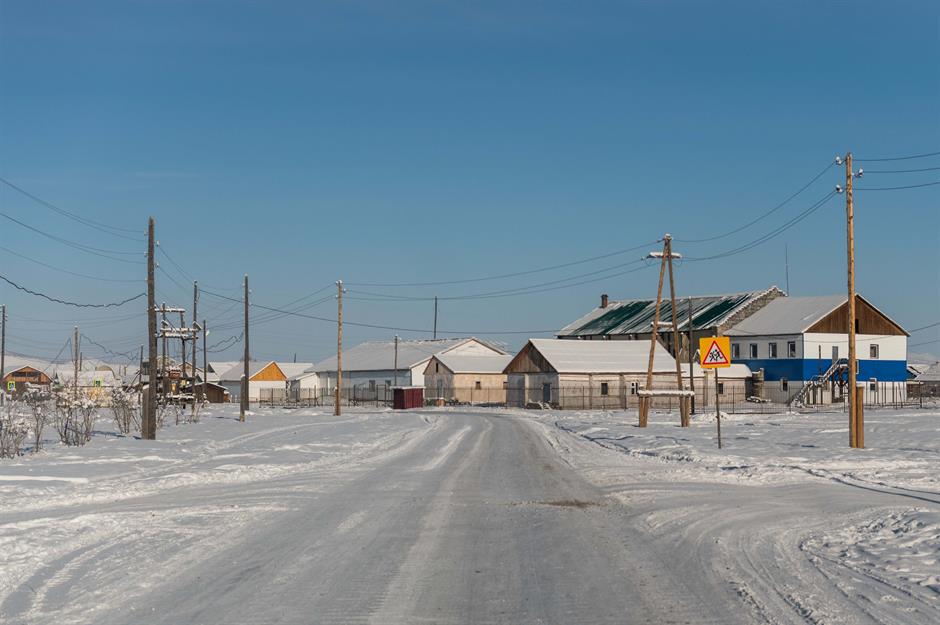
With winter temperatures averaging -58°C (-72.4°F) pretty much everything is frozen in the village. That includes engines, meaning many cars are left running all the time and face coverings are a must as eyelashes and even saliva freeze in an instant.
Oymyakon, Russia
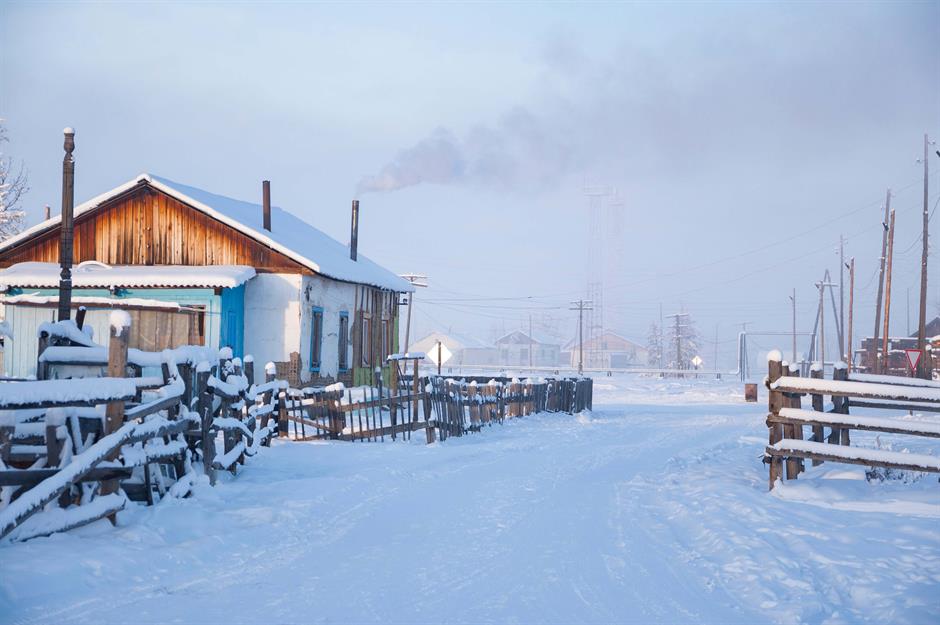
The nearest city is Yakutsk, which is 576 miles (929km) away. The constant layer of permafrost makes life hard for the locals and prevents farming as nothing can penetrate the hard ground.
The frozen earth also stops the town from having running water, so all toilets are outhouses.
Oymyakon, Russia
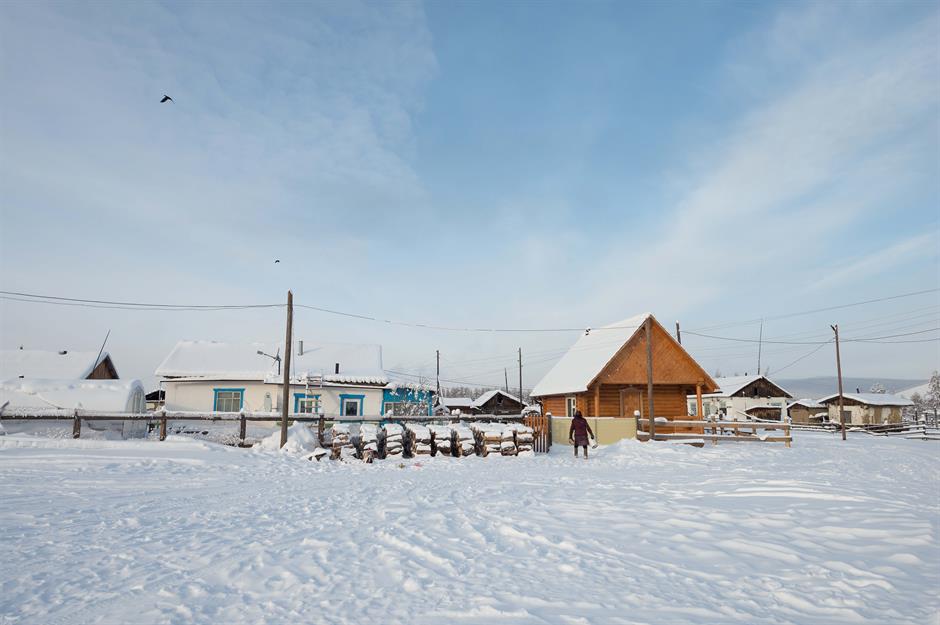
Most residents live off high-protein foods including raw frozen fish, reindeer meat and ice cubes of horse blood to get their daily required nutrients.
There are no conveniences in town due to the remote location and in the freezing weather. And if you were thinking of visiting and sending a postcard home, even pen ink freezes here!
Ittoqqortoormiit, Greenland

The small town of Ittoqqortoormiit in Greenland is the most remote inhabited community in the Western Hemisphere. Its closest neighbour is the Northeast Greenland National Park, the world's largest national park.
Overrun by polar bears, reindeer and walruses, the only human presence in the park is the Sirius Sled Patrol, a Danish naval unit. So residents really are all on their own here.
Ittoqqortoormiit, Greenland
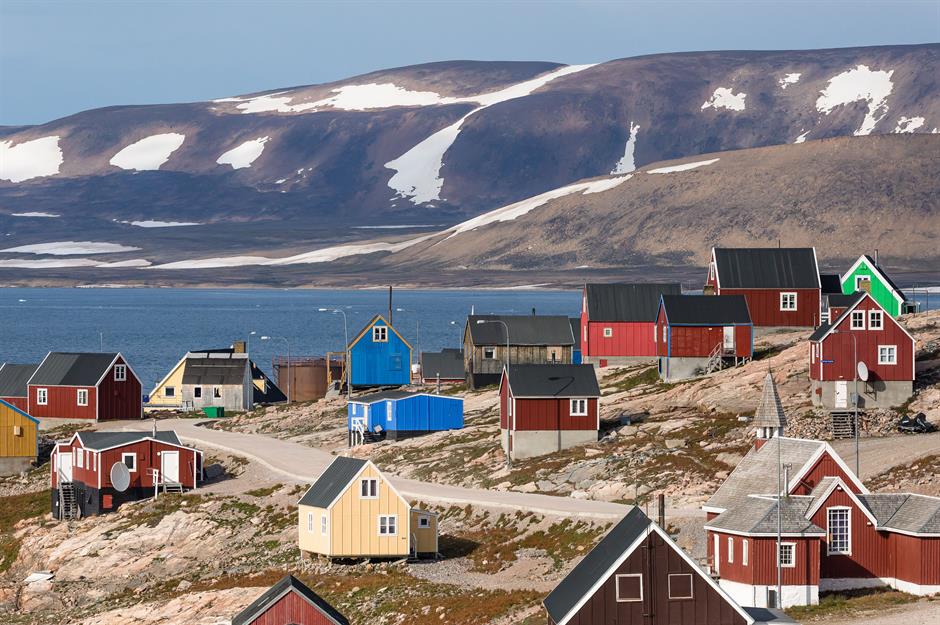
The tiny outpost is made up of a scattering of small wooden buildings, painted in bright shades of blue, red, yellow and green. These homes are perched on a coastal bluff made from gneiss, which is one of the oldest types of rock on Earth.
With a small population of just 452 as of 2024, residents in this isolated spot make their income from hunting and summer tourism. The population briefly swells in August and September when cruise ships arrive with about 3,000 tourists in total.
Ittoqqortoormiit, Greenland

For around nine months of the year, sea ice blocks the town's access to civilisation, meaning hunting and fishing are the only ways the residents can survive.
However, global warming is now posing a serious threat to the native way of life, as thinning ice makes hunting much more difficult, and indeed impossible during some months. "In August, all the ice sheet will have melted. There will be just the sea, a rough sea," a local fisherman reported to website Phys.org.
Ittoqqortoormiit, Greenland
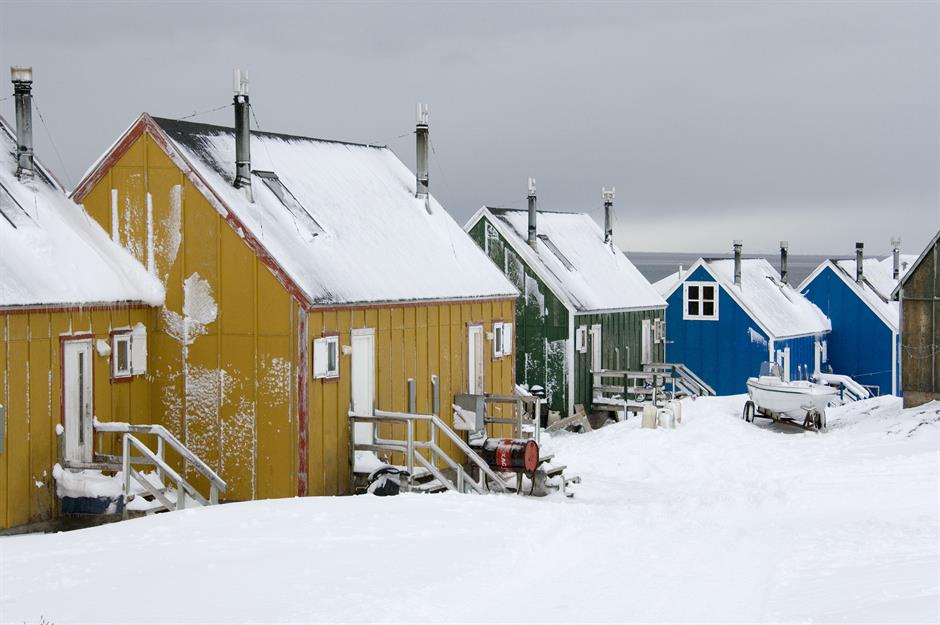
Ittoqqortoormiit's inhabitants do have access to a local pub that opens just once a week, a supermarket filled with freeze-dried food, plus a small souvenir shop and post office, all located in the centre.
To reach the nearest airport, residents have to fly by helicopter or in warmer months, they can take a boat.
Palmerston Island, Cook Islands
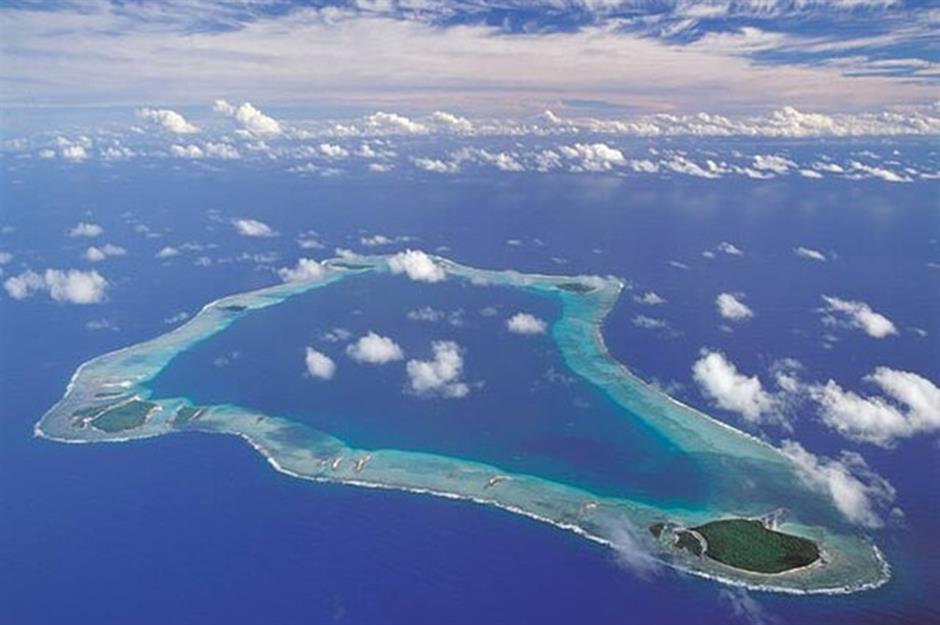
Around 2,000 miles (3,219km) northeast of New Zealand sits the self-sufficient Pacific island of Palmerston.
One of the 15 Cook Islands, the coral atoll (a ring-shaped coral reef, island, or series of islets) has a population of just 25 people, according to the 2021 census. They all permanently reside in one of the most isolated communities on the planet.
Palmerston Island, Cook Islands
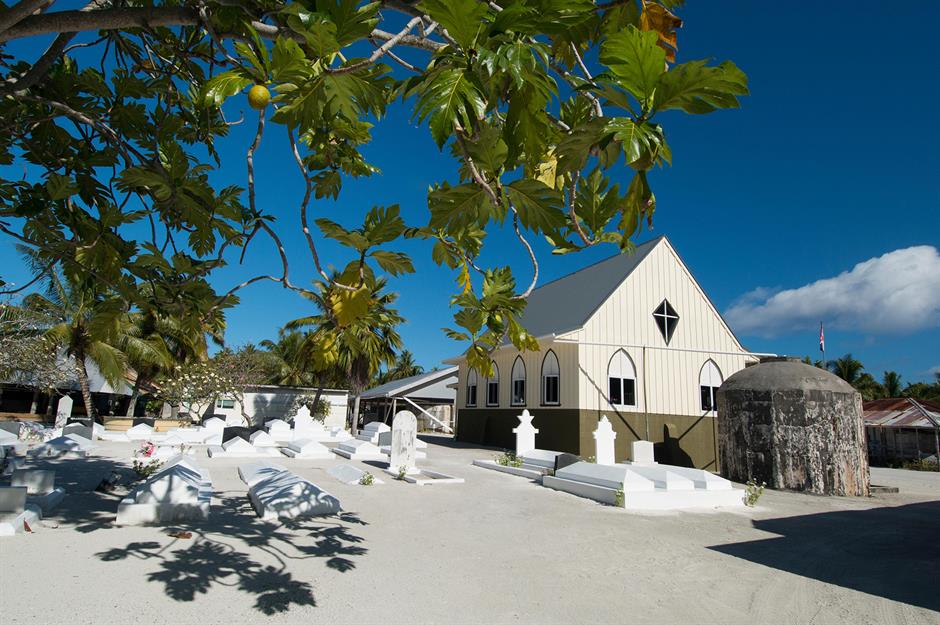
More remarkable still, all of the island's residents are related, share the same surname, and can trace their lineage back to one man, the British explorer William Marsters, who arrived on the uninhabited island in 1883 along with his two Polynesian wives.
A stroll through the local cemetery will reveal generations of Masters, all descended from William's 23 children and 34 grandchildren. The locals play volleyball every afternoon together at 4pm, with the exception of Sundays. “The only thing we like better than volleyball is church,” an islander explained to the BBC.
Palmerston Island, Cook Islands

Even though it may look idyllic, the tiny 640-acre (259ha) island has no link to the outside world apart from a telephone station for emergencies. Cargo ships only visit a few times a year as, without a harbour, access to the island is treacherous
There are just two main dirt tracks on the island, while access to electricity and the internet is available for just a few hours a day. Palmerston Island is so remote that it wasn't featured on standardised maps until 1969, despite Captain Cook first landing here in 1777.
Palmerston Island, Cook Islands
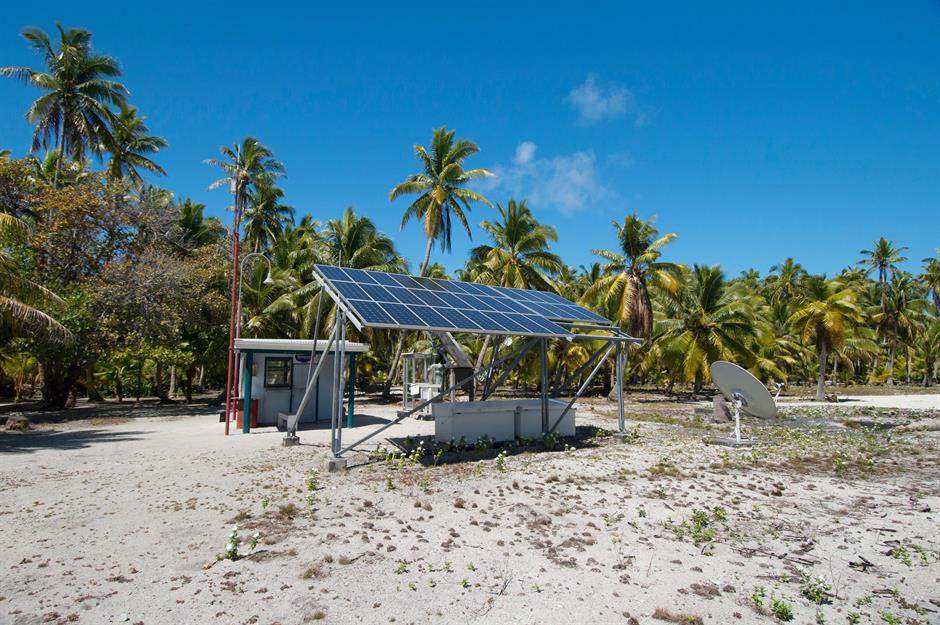
Life on the island is one of isolation and simplicity, with the locals collecting rainwater for drinking and relying on fish, breadfruit and coconuts to get by. The tropical Bosun Bird is also a delicacy on the island.
The community is self-reliant due to its fishing, a rainwater catchment system and a solar generator. It is also part of an environmental programme to protect its thriving green turtle population.
Loved this? Like and follow us on Facebook to explore even more remote homes and incredible off-grid places
Comments
Be the first to comment
Do you want to comment on this article? You need to be signed in for this feature